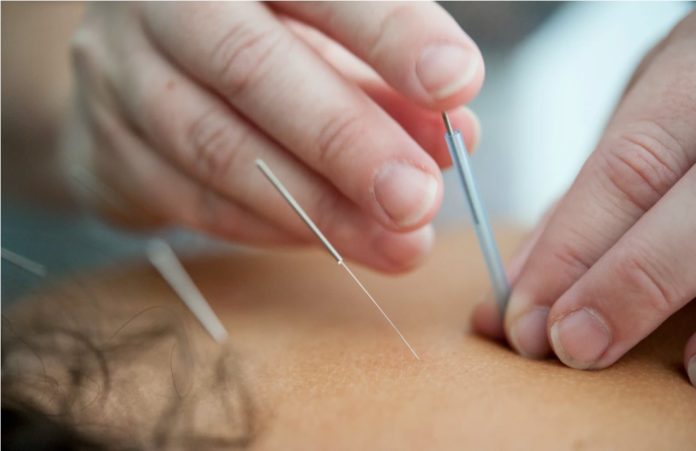We’ve all heard about arthritis, and it’s surprisingly common as we get older. It can be difficult to tell whether arthritic pain is starting to occur, however. In a lot of cases, arthritis occurs slowly over time—making it tough to spot. Fortunately, there are some great options to lessen arthritic pain. Today’s treatment options are incredibly effective: In some cases, arthritic pain can be relieved completely.
So, what makes arthritic pain common? Even though the causes of arthritis are tough to avoid, knowing about them can definitely reduce the likelihood of back, neck and leg pain over time. Let’s check out the biggest factors—as well as some great ways to avoid them.
A Quick Look: What is Arthritic Pain, Exactly?
Even though back, neck and leg pain commonly occur, arthritic pain is a specific type. It involves the swelling, tenderness and even long-term injury of the joints. The main symptoms of arthritis are:
- Prolonged joint stiffness
- Dull, radiating pain during joint rotation
- Redness and swelling
- A reduced joint motion range
The Main Causes of Arthritis
There are three, main forms of arthritis: rheumatoid arthritis, osteoarthritis and psoriatic arthritis. Rheumatoid arthritis is more common, as it tends to occur with age. Osteoarthritis, meanwhile, can occur due to age or other health concerns. Psoriatic arthritis, meanwhile, stems from psoriasis itself.
Let’s take a closer look at each type.
Rheumatoid Arthritis
Rheumatoid arthritis is an inflammatory disorder, and it can impact areas beyond the joints, too. In some cases, it can even affect the lungs, skin, eyes and blood vessels.
Causes of Rheumatoid Arthritis
This type of arthritis stems from an autoimmune disorder: The body’s immune system attacks perfectly healthy body tissues, damaging them, significantly, over time. This makes rheumatoid arthritis different from osteoarthritis, and rheumatoid arthritis can affect any of the body’s joint areas.
Symptoms of Rheumatoid Arthritis
There are quite a few indicators of rheumatoid arthritis, but the following are the most common:
- Joint stiffness in the morning, and after physical activity.
- Fever, fatigue and prolonged appetite loss.
- Tender, swollen joints
Rheumatoid Arthritis Treatment
Even though rheumatoid arthritis treatment is an autoimmune disorder, it can still be treated in several ways. More often than not, disease-modifying antirheumatic drugs, or DMARDs, are used. These medications slow the progression of the autoimmune disease. Other methods, which are pretty effective, include the following:
- Physical therapy
- Massage Therapy
- Aquatic therapy
- Cold laser therapy
Osteoarthritis
Osteoarthritis occurs a lot: It affects millions of people around the world, and it can be tough to avoid. But why so?
Causes of Osteoarthritis
Osteoarthritis can occur due to a previous, joint-related injury, but its main cause is age. Over time, our movements wear down the protective cartilage of our joints. This cartilage, when its healthy, cushions the joints and bones. When it wears down, however, the resulting wear and tear can cause pain in the spine, hips, hands and knees.
Symptoms of Osteoarthritis
While osteoarthritis occurs over time, some symptoms can be identified before its pain becomes intense. Osteoarthritis can be identified by the following symptoms:
- Joint stiffness, especially after being physically inactive.
- Loss of range of motion.
- A ‘grating’ sensation at the joint.
- A popping, or crackling, sound during joint rotation.
Osteoarthritis Treatment
By and large, osteoarthritis is considered a degenerative disease. Unfortunately, it worsens over time. This said, there are treatments which can greatly reduce the pain. In some cases, they’re effective enough to make it almost unnoticeable.
The following treatments are the most effective:
- Physical therapy
- A weight-related exercise program
- Anti-inflammatory medicines
- Ice and heat therapies
- Electrical stimulation
Psoriatic Arthritis
Psoriatic arthritis affects those with a psoriatic skin condition. This condition involves red, scaly patches of skin. Even though psoriasis occurs on the body’s surface, it can actually affect the joints beneath it!
Even though psoriasis can affect any part of the body, it frequently occurs on skin covering major joints, such as the fingers, the knees and the spinal column.
Causes of Psoriatic Arthritis
Interestingly, psoriatic arthritis occurs when our bodies immune systems attack healthy tissue. This is an abnormal immune response, but it also results in the overproduction of skin cells—resulting in psoriatic skin conditions.
Symptoms of Psoriatic Arthritis
Psoriatic arthritis, unfortunately, tends to get worse over time. In general, it can be identified by the following symptoms:
- Lower back pain, especially between the spine and pelvis.
- Swollen toes and fingers, and even developing deformation.
- Foot numbness and pain, especially in the heel.
Psoriatic Arthritis Treatment
It’s a good idea to contact your physician if you have psoriasis, because psoriatic arthritis might develop over time. There are still some great ways to reduce the pain, however:
- Immunosuppressant medications.
- Targeted joint stretches.
- Posture improvement techniques.
- Ice and heat therapies.
Professional Help: Living Pain-Free
PT Link Physical Therapy is well-versed in the many causes of arthritis. We want to restore your life’s comfort, mobility and longevity. Feel your best, and live life without arthritis pain: We’re here to help.


